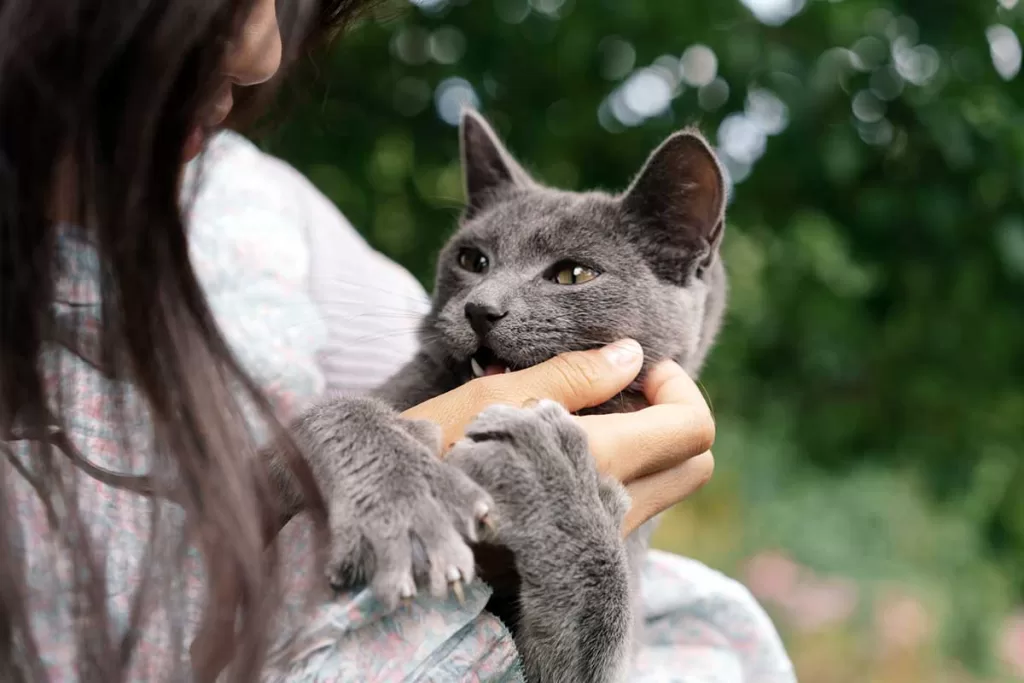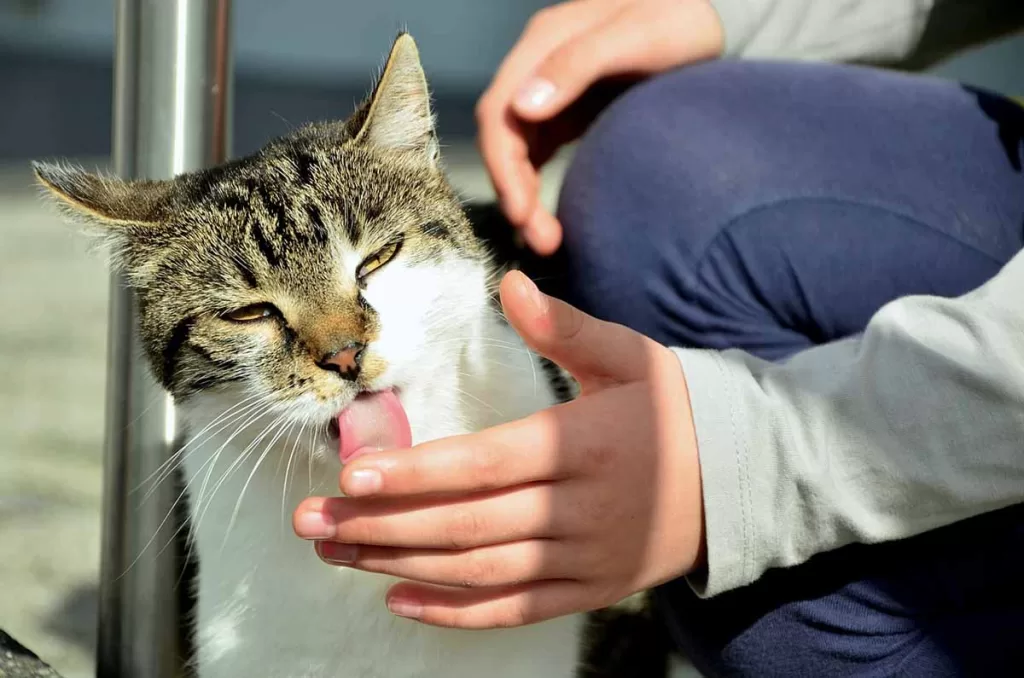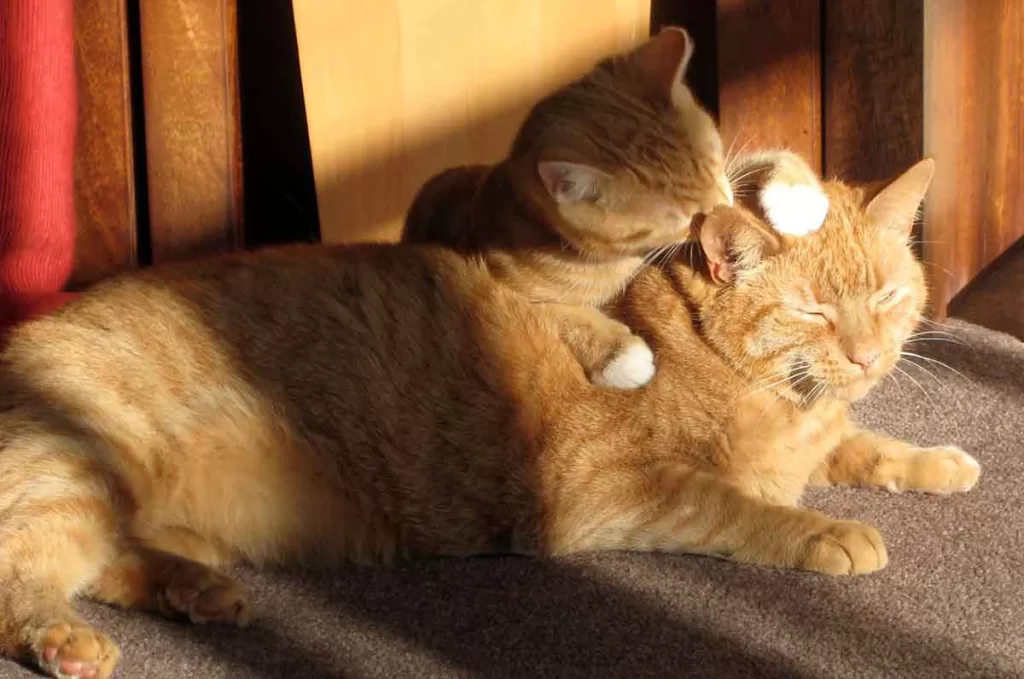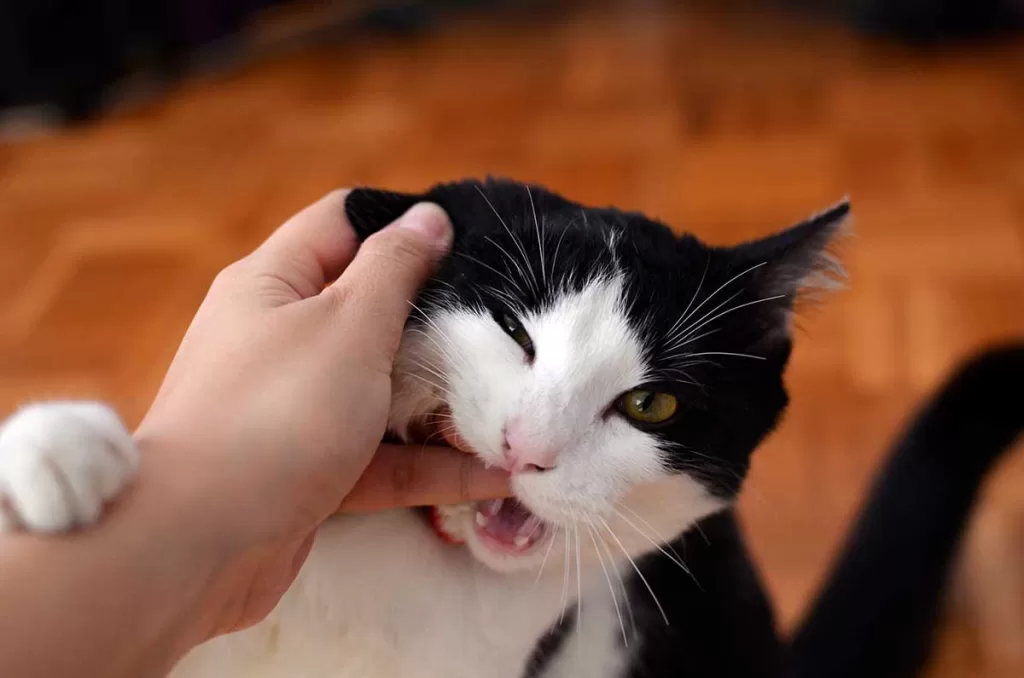If you’re a cat owner, then you know that cats can have some bizarre (yet adorable!) behaviors – like licking your hand before taking an unexpected nip.
It’s not uncommon for cats to give their humans a few licks before delivering a gentle bite. But why exactly does your cat do this?
The main reason that cats lick and then bite their owners is as a sign of affection. They may also do this to get their owner’s attention or to initiate play. The cat’s body language at the time will help you interpret exactly what message your cat is trying to convey with this behavior.
This article will explore the reasons cats may engage in licking and biting behavior, to help you better understand your cat and build a strong bond based on mutual trust.
Reasons Why Your Cat Will Lick Then Bite
There are a few different reasons why cats will lick and then bite. Or, they may bite first and then lick. Either way, your cat is trying to communicate the same thing. But what is it they are saying? What are the reasons for this behavior?
Cats Lick and Bite To Show Affection
One of the main reasons that cats lick and bite their owners is as a sign of affection. Cats groom each other to bond, show each other affection, and give comfort – that same behavior is being extended to you.
This “love bite” tends to happen when you and your cat are both calm and relaxed. Your cat may be on your lap or otherwise touching you, and you may even be petting it. Your cat is probably purring, and you are just enjoying each other’s company.
The relaxed, happy cat will often demonstrate its contentment by licking you – grooming you as if you were another cat. This may progress into a gentle nip or nibble, which is a normal grooming activity.
So if all other body language points to a happy, relaxed, and contented cat, when it gives you a few licks and a soft bite it is really just loving on you.
Cats Lick and Bite To Get Your Attention
When cats are feeling lovey, they usually want to feel loved back. You may notice sometimes your cat rubs against your hand or tries to get its head underneath your hand so that you will pet it.
If that fails to get your attention, they may then proceed to lick your hand – again, trying to get a response from you. If that fails, they may push it even further and give you a bit of a nip.
This is often no different from a love bite, but sometimes they will bite just a little harder than normal to really make sure they have your attention.
Once they get what they want – your attention and petting – they usually stop the biting and just lay back and revel in your undivided attention. Unless what they were really after was some play time, then they may take it a little further.

Cats Lick And Bite When They Are Feeling Playful
Another common reason why cats may lick and then bite is because they are feeling playful. This type of behavior can be confused with aggression since play bites tend to be harder than love bites.
I often find that when I try to pet my cats when they are alert and active, they don’t tend to sit still for quiet pets. Instead, they will try to turn the petting into more active play.
They have a sneaky habit of rolling over and showing their belly which is, of course, irresistible. Who can help but give them a tummy rub when they do this?!
When I fall for their trap, the usual reaction is to allow me a few seconds to lull me into a sense of safety and then grab my hand and attack it!
Other times, though, instead of attacking me right away they will grab my hand, hold on to it, and give a few licks. Then a bite. And the game is on! These play bites are harder than a love bite. Although not hard enough to break the skin, they do sometimes hurt a bit.
This is normal play behavior for cats; however, they should not be encouraged to continue very rough play, and you need to break off the interaction if it escalates beyond gentle play.
Besides the fluffy tummy trap scenario, cats may try to initiate play by starting with the “lick first” approach and progressing to a gentle bite. But how do you know the difference between a love bite and a play bite?
Cats don’t have words to tell you what they want or what they are thinking, so they rely heavily on body language to get their point across. Their bites need to be interpreted in the context of the rest of their body language at the time.
As mentioned previously, if the cat is relaxed, purring, and nuzzling you or rubbing against your hands then it’s likely that the bite is a love bite.
On the other hand, if the cat is alert and active – ears perked up looking around, tail flicking back and forth – then they may be feeling frisky and are biting you in play.
Your Cat May Be Marking You As “Theirs”
When your cat licks and then bites you, is this followed by rubbing the side of its mouth against you? One possible explanation for why cats lick then bite is that they’re trying to mark you as their territory.
This behavior releases pheromones from glands in the cat’s lips and cheeks, which can be used to stake claim over an area or thing – in this case, you!
This is nothing to worry about as cats use this behavior in a very social way. It is possible that they feel secure and contented enough with you to mark you as “theirs.”

When Should I Worry About My Cat’s Biting?
If your cat’s biting is escalating, becoming harder and more aggressive, then this behavior needs to be discouraged.
Perhaps you unintentionally promoted overly aggressive play, causing your cats to believe it is acceptable behavior. Play that may have seemed innocent and charming when your cats were kittens can become harmful once they reach adulthood.
It’s important for cats to learn to control their play as they mature and, if they haven’t learned from you, they may not know how to moderate their behavior.
If your cat has always “played rough” then most likely it hasn’t been taught differently, and biting hard during play is normal to them. The best way to discourage this behavior is to break off interaction when the bite is too hard and provide positive reinforcement for more gentle play.
However, if the biting has escalated suddenly, then it may be a sign of another problem. Cats may lash out with biting behaviors when they are feeling uncomfortable or threatened. They may be bored, stressed, or even suffering from a health condition that is making them feel out of sorts.
You know your cat better than anyone else, so if you notice any changes in their behavior, especially if your cat is biting hard enough to break the skin, then you should be concerned. then it’s best to take them to the vet for a check-up as soon as possible.
Tips For Curbing Unwanted Biting Behavior In Cats
If your cat is biting you roughly in play, the best way to curb this behavior is to redirect their behavior and get them to release their energy in other ways.
It’s important to provide your cat with plenty of mental and physical stimulation so that it can express its natural curiosity and get rid of excess energy. Offer interactive toys, set up cat trees for exploring, or try out some puzzle feeders to keep them entertained.
Use toys to play with your cat, not your hand. Encouraging your cat to chase your hand or to wrestle with it is only teaching it that biting and scratching you is okay.
If your cat does bite you roughly in play, sharply tell them “no” (or let out a sharp “ouch!”) then stop the play immediately and walk away. This will teach your cat that when they bite too hard, they no longer get to play.
If your cat’s “love bites” are too hard (or too often, or always directed at a sensitive spot such as your nose), then it’s best to discourage this behavior as soon as they do it.
To discourage this behavior, gently move them away so they cannot engage in this behavior. Use a firm “no” at the same time. If they persist, remove them or yourself from the area. Over time, your cat will learn that their behavior is achieving the opposite of what they want.
You can also redirect their attention away from you, such as by offering them a favorite toy to play with. Don’t provide treats to distract them away from their behavior, as they will just learn to associate their bad behavior with rewards.
Reward your cat for appropriate behavior. Love bites that are used appropriately, or play bites with a soft mouth can be rewarded by giving them treats or extra love and attention
In all cases, remember that consistency is critical. If you want to change your cat’s behavior, then you must be consistent in how you deal with it. Letting them bite sometimes and then correcting them at other times only confuses them.
Conclusion
Licking and then biting is usually perfectly normal behavior for cats. With consistent training and positive reinforcement, your cat can learn when their behavior is appropriate or not.
By understanding why cats do this, you’ll have a better understanding of how to build trust between the two of you and create an even stronger bond in the process.



